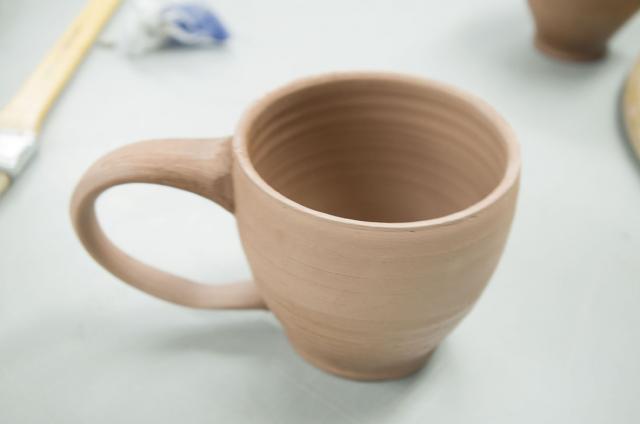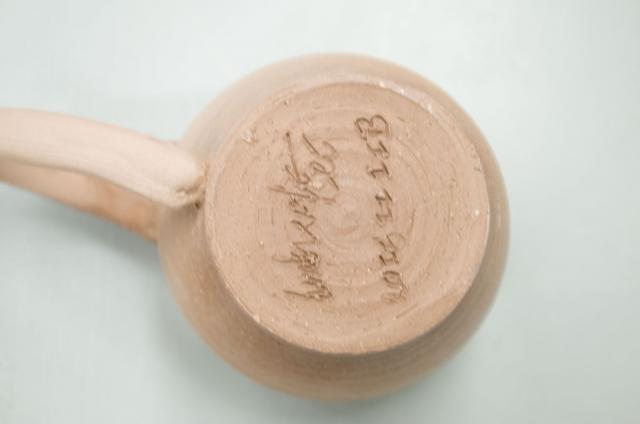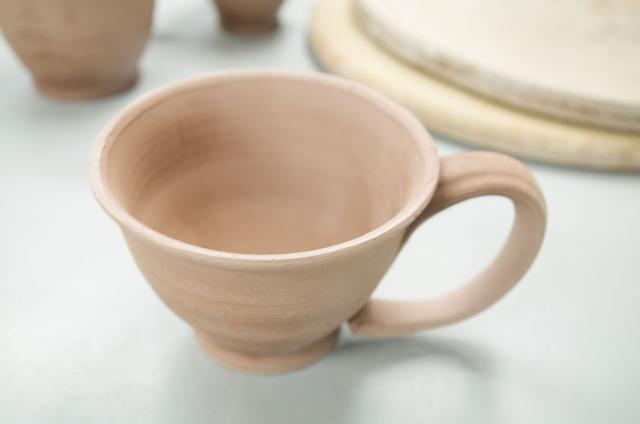Submitted by Ambrose on Fri, 2015-11-27 17:04
I had not thrown for literally half a year before I started again earlier this semester, and when I tried to bisque my first batch of work half of the batch got rejected for failing quality control. All the faulty work looked something like this:

Now what’s wrong with this? Look again from the bottom:

Although the picture is, unfortunately, cropped, you can still see that the handle is essentially the same width as the diameter of the body of the cup. The problem was with the proportion between the attached handle and the body: The handle is too far out, and when you grasp a cupful of hot liquid you might not be able to securely grasp it at the correct angle.
There’s a second problem in some of the faulty pieces, mostly to do with the thickness of the handles. In effect, the faulty handles were too thin; visually they didn’t match the size of the cup bodies—in other words, they looked flimsy.
A third problem in a couple of the faulty pieces relates to the attachment of the handles. The faulty attachments look somewhat like this (unfortunately this is a bad picture for showing the fault; but all the faulty pieces have already been destroyed so I can’t reshoot them):

When I asked RT about what problem was with this, she looked at it a second time and said something like “I thought the bottom was not attached.” Although theoretically the attachment might have been secure, visually it looked unattached and therefore someone using the cup wouldn’t feel safe.
Getting back to my main point, in an earlier post I voiced some pretty nasty comments about art criticism, especially as it relates to craft. But I think the QA fail has highlighted a possible reason for instinctively disagreeing with describing skill as merely reduction of uncertainty.
Returning to the three problems I mentioned above, the first problem was failing to afford a secure grasping action, while the other two problems were the presence of false affordances (that is, apparently affording a safety hazard when the affordance is probably not actually present). Although RT has described everything in visual terms, all this visual talk is actually a proxy for a critique on the work’s ergonomics and affordances.
I think ultimately, at least certain aspects of craftmanship are directly related to affordances and therefore craftmanship is not entirely subjective.
